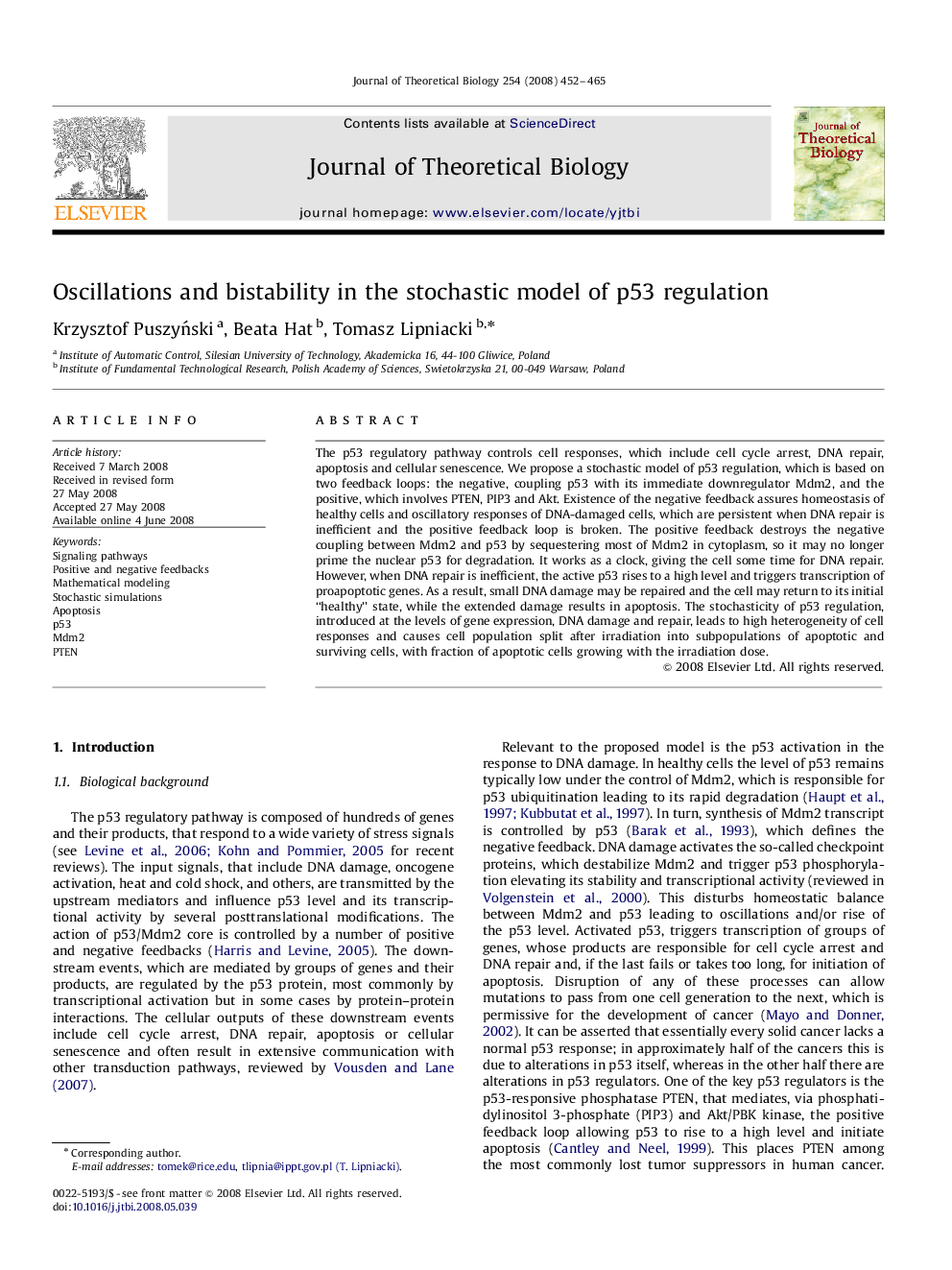| Article ID | Journal | Published Year | Pages | File Type |
|---|---|---|---|---|
| 4498384 | Journal of Theoretical Biology | 2008 | 14 Pages |
The p53 regulatory pathway controls cell responses, which include cell cycle arrest, DNA repair, apoptosis and cellular senescence. We propose a stochastic model of p53 regulation, which is based on two feedback loops: the negative, coupling p53 with its immediate downregulator Mdm2, and the positive, which involves PTEN, PIP3 and Akt. Existence of the negative feedback assures homeostasis of healthy cells and oscillatory responses of DNA-damaged cells, which are persistent when DNA repair is inefficient and the positive feedback loop is broken. The positive feedback destroys the negative coupling between Mdm2 and p53 by sequestering most of Mdm2 in cytoplasm, so it may no longer prime the nuclear p53 for degradation. It works as a clock, giving the cell some time for DNA repair. However, when DNA repair is inefficient, the active p53 rises to a high level and triggers transcription of proapoptotic genes. As a result, small DNA damage may be repaired and the cell may return to its initial “healthy” state, while the extended damage results in apoptosis. The stochasticity of p53 regulation, introduced at the levels of gene expression, DNA damage and repair, leads to high heterogeneity of cell responses and causes cell population split after irradiation into subpopulations of apoptotic and surviving cells, with fraction of apoptotic cells growing with the irradiation dose.
